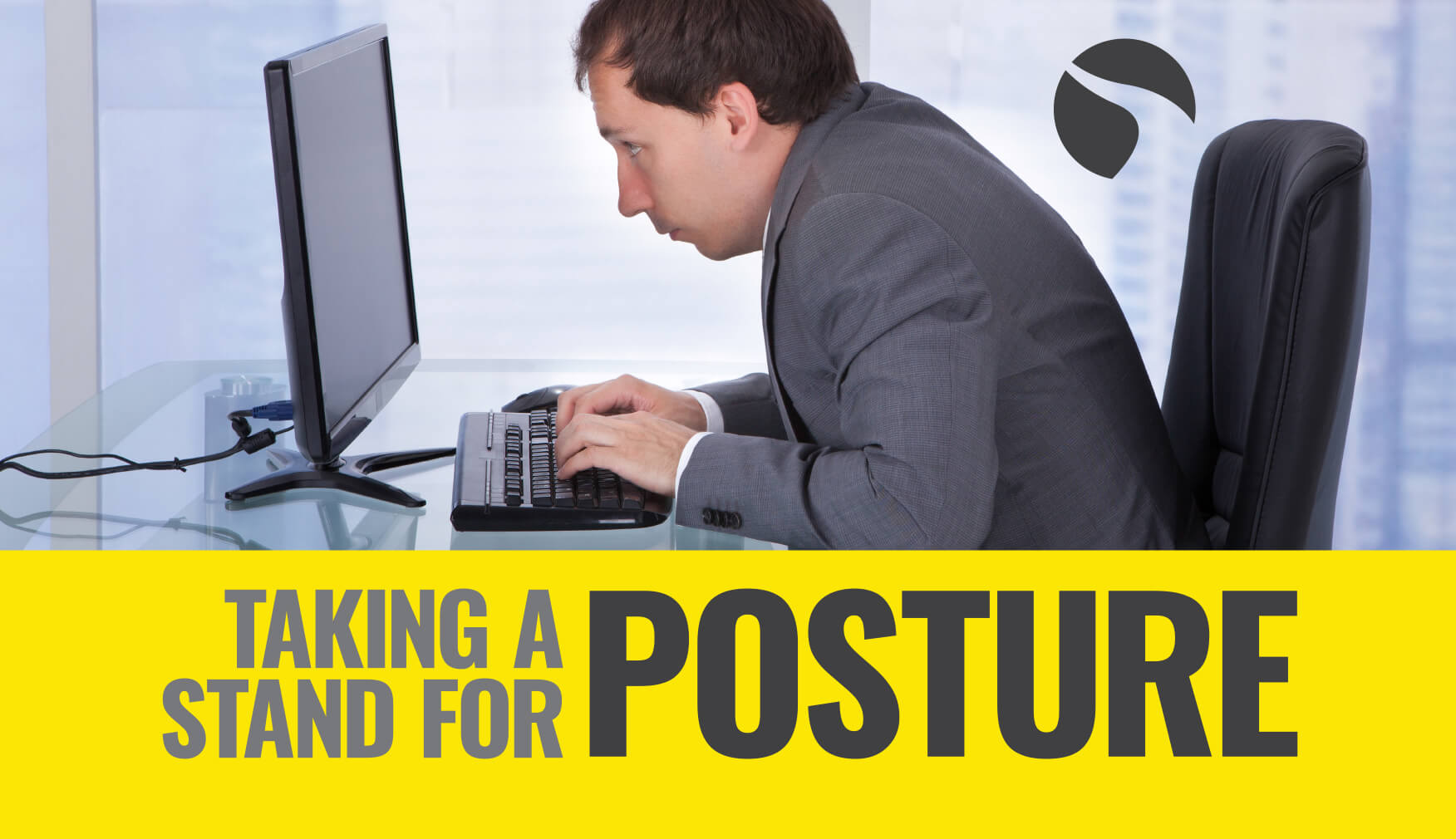Taking a stand for posture

By now you probably know that sitting all day, scrolling through your phone and spending 3 hours straight sprawled on your sofa isn’t good for you or your posture.
For too long though we’ve believed that perfect posture can only be achieved by balancing books on your head at finishing school.
Sitting, standing, and walking with a completely erect spine and our head stacked directly above our shoulders 100% of the time is a nice thought, but it’s a pipe dream. If you want to make a change, it’s not about having our postural muscles “engaged” 24 hours per day. It’s about those muscles being strong, responsive, and engaged when we need them to be.
The culprit
When you slouch and struggle to use good form in basic movement patterns, it can definitely be a product of inflexibility in your thoracic spine (upper back). The T-spine should have the capability of flexing and extending, along with the capability of going through rotation at each segment.
When either of these capacities are subpar, the lumbar spine (lower back) takes on much more of a workload than it should. Before addressing anything muscular, it’s important to train that jimmied up portion of the spine so that it extends and rotates freely without any load whatsoever – we’ll tell you how later!
Don't over isolate
The aim of the game is to get your postural muscles to engage together when necessary. Rotator cuff or rear deltoid exercises have their place but if you want to improve your posture, you need to address as many of the muscles as possible. That’s what will give us real answers.
The exercises
Foam roller thoracic spine extension
Using gravity and a foam roller is a great way to make the spine feel extension. Being able to have the back and shoulders fold around the roller can help the body and spine connect the brain to the feeling of extension. It’s actually more of a relaxing stretch. Using different arm positions can be a game changer to help understand how this translates to overhead exercises.
Resisted scapular slide
Use a cable pulley and perform the lift from a seated position by pulling the rope level with your ears. From this position press upwards as if performing a shoulder press. This allows you to focus on avoiding back hyperextension, which is a common compensation pattern when you have bad shoulder mobility.
This movement creates force that works against your postural muscles, so keeping the hands and arms moving along the same plane becomes a more challenging task for the scapular muscles.
Blackburns
With light dumbbells, get yourself into a bent over position. Begin by rowing the dumbbells up, rotating your shoulders so that your hands are level with your ears and press outwards.
This movement gives the rotator cuff muscles a green light to work in tandem with all of their synergists (supporting muscles).
To sum up
Focus on the postural muscles around your T-spine first. Make sure the back muscles are strong and responsive through proper training so you can engage correct posture whenever necessary. For more info on how to correct your posture and look after the thoracic spine, speak to one of the Fitness Team.
